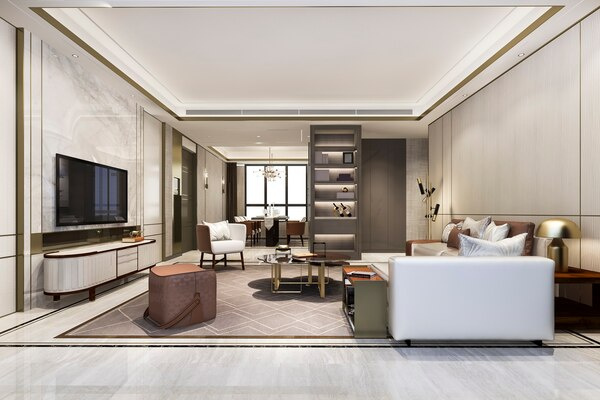Revamping Small Spaces with Style
Revamping small spaces can be a challenging yet rewarding endeavor. With the rise in urban living and the growing popularity of tiny homes and compact apartments, mastering the art of optimizing small spaces is more relevant than ever. Here are some insights and tips to help you transform limited areas into stylish, functional environments.
1. Embrace Minimalism: Minimalism is more than just an aesthetic choice; it's a functional necessity in small spaces. By reducing clutter and focusing on essentials, you can create an open and airy feel. Opt for furniture and decor items that are multi-functional, such as a sofa bed or a coffee table with storage space. The minimalist philosophy of "less is more" allows for breathable space while avoiding overwhelming the room with unnecessary items.
2. Choose Smart Storage Solutions: Maximizing storage is crucial in small spaces. Consider built-in shelving and customized storage solutions that utilize vertical space. Floating shelves, under-bed storage, and wall-mounted organizers are excellent for keeping valuables neatly tucked away yet easily accessible. Incorporating furniture with hidden storage compartments can also dramatically enhance space efficiency.

3. Optimize Lighting: Proper lighting can significantly impact the perception of space. Brighter spaces tend to feel larger and more inviting. Use a combination of natural and artificial lighting to your advantage. Mirrors strategically placed can reflect light throughout the room, creating the illusion of a more expansive area. Consider layering lighting with ambient, task, and accent lighting to add depth and warmth to your space.
4. Use Color Wisely: The color palette plays a crucial role in space perception. Light colors such as whites, soft greys, and pastels can open up a room, making it feel larger. However, strategically using bold colors can also add dimension and character to a small space. For instance, painting a feature wall or adding vibrant accessories can draw the eye and give personality to your home.
5. Go Vertical: When floor space is at a premium, look to the walls for opportunities. Vertical storage, art, and even vertical gardens can add layers to a room without taking up valuable square footage. Tall bookcases or armoires can help draw the eye upwards, emphasizing the room's height and adding to the overall spacious feel.
6. Select Furniture with Legs: Furniture with exposed legs creates a sense of airiness, allowing the eye to travel underneath and around the piece, which can make a room feel less cramped. Opt for furniture that doesn’t sit directly on the floor for an open and fresh aesthetic.
7. Incorporate Reflective Surfaces: Incorporating materials like glass, mirrors, and high-gloss finishes can help bounce light around the room, making it feel brighter and more open. Consider adding mirrored cabinets or glossy tiles as easy yet effective ways to expand the perceived space.
8. Personalized Touches: While functionality is key in small spaces, it is equally important to incorporate elements that reflect your personal style. Whether it's art, books, or family photos, adding these unique touches can make your small space feel homely and inviting.
Redesigning a small space requires a creative approach and careful planning, but with thoughtful choices, it's possible to transform even the most modest of areas into stylish, comfortable living environments. By focusing on functionality and aesthetics, you can create a space that not only looks appealing but also suits your lifestyle needs. Remember, the goal is to make every inch count.